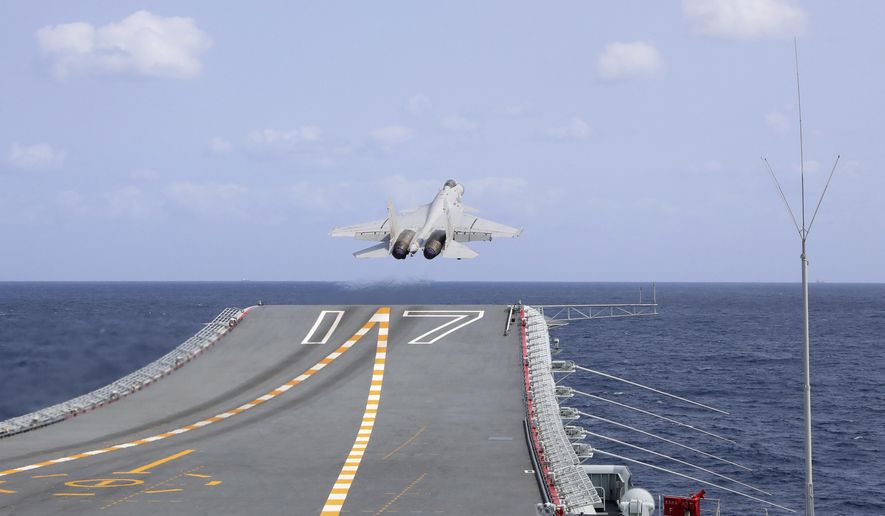China’s military dispatched an aircraft carrier strike group through the Taiwan Strait this week in the latest move in Beijing’s effort to declare the waterway its maritime territory.
Taiwan’s Defense Ministry disclosed online Wednesday that the strike group led by the carrier Shandong “sailed north along the median line of the Taiwan Strait” starting Tuesday afternoon.
The Shandong group “entered the waters north of Taiwan at around 0800 today and is continuing to sail north,” the ministry said.
“We have deployed appropriate forces to respond,” it added.
The Chinese also dispatched 13 People’s Liberation Army aircraft and a total of five navy vessels around Taiwan at the same time as the Shandong traveled through the strait.
Two Su-30 jets and two J-10 fighters, along with a Z-9 anti-submarine warfare helicopter, crossed the median line, the unofficial sea border between Taiwan and China.
SEE ALSO: White House confirms Biden, China’s Xi to meet during San Francisco APEC summit
The carrier had been deployed east of Taiwan as part of military exercises on Nov. 1.
That same day, two warships — one each from the U.S. and Canada — sailed through the strait in what a Navy spokesman called the upholding of “high-seas freedom of navigation and overflight.”
By Thursday morning, the Chinese carrier group’s warships were continuing to sail northward, the Taiwanese ministry said.
In Japan, the defense ministry there said earlier this week that the Shandon and its escorts had transited the South China Sea following landing drills in the Pacific Ocean for nine days.
The last time the Shandong passed through the Taiwan Strait was in June.
Last week’s U.S.-Canadian passage through the strait took place in a corridor that is beyond the territorial sea of any coastal state.
“Cooperation like this represents the centerpiece of our approach to a secure and prosperous region where aircraft and ships of all nations may fly, sail and operate anywhere international law allows,” Lt. Luka Bakic, a Seventh Fleet spokesman, said.
The Navy has been conducting near-monthly passages in both the Taiwan Strait and South China Sea.
Asked whether Chinese warships sought to hamper the destroyer passage, Lt. Bakic said only that all interactions with foreign vessels were professional.
Tensions remain high between the U.S. and Chinese militaries that have engaged in a series of close aerial encounters that Pentagon officials have described as “risky” and “coercive.”
U.S. surveillance aircraft conduct regular flights in international airspace off the Chinese coast and the Pentagon said China is stepping up dangerous aerial intercepts of the aircraft in a bid to prevent them from operating.
An analysis by lawyers with the U.S. Indo-Pacific command states that China has not openly asserted sovereignty over the entire Taiwan Strait, but claims to exert “sovereignty, sovereign rights and jurisdiction” over most of the Taiwan Strait.
The analysis said the Chinese position is “legal warfare” carefully crafted.
The Chinese also use the terms “sovereignty” and “jurisdiction” as principles that are applied excessively and “in the context of the strait, could serve as pretext for future actions that disrupt the status quo or limit the international community’s navigational and other rights/freedoms in the strait.”
The analysis said the Taiwan Strait is international waters and international airspace not subject to Beijing’s sovereignty.
“The PRC’s efforts to aggrandize its rights in the strait while constraining the rights/freedoms of other nations — by claiming excessive sovereignty, jurisdiction, or control in the Strait-has no basis in international law,” the analysis states, adding that China is conducting “gray zone” operations to control the strait.
• Bill Gertz can be reached at bgertz@washingtontimes.com.




Please read our comment policy before commenting.